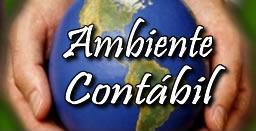Teaching case: the water I wear
DOI:
https://doi.org/10.21680/2176-9036.2021v13n2ID25738Keywords:
environmental impacts; social impacts; sustainability; environmental accounting; environmental costs.Abstract
Purpose: This case aims to enable students to learn about environmental impacts and their effects and allow them to use methods of economic valuation of the environment to internalize externalities related to environmental and social impacts. The product in question is widely used what can make students identify themselves with the case. Then, they will be more interested in the problem identified in this case which is the non-internalization of externalities (social and environmental impacts).
Methodology: The methodology of this teaching case is qualitative. Students read, discuss and apply the subject. Upon reading the case, students learn the steps of the laundry washing process. Students can identify the direct and indirect environmental and social impacts and their consequences by reading and discussing the case. Finally, they can apply the methods of economic valuation of the environment.
Results: It is possible to identify the social and environmental impacts and analyze and discuss these impacts on management and accounting.
Study Contributions: We hope that people can use this teaching case in undergraduate and graduate courses in environment and sustainability topics and topics related to costs and management.
Downloads
References
Abaza, H., Bisset, R., & Sadler, B. (2004). Environmental impact assessment and strategic environmental assessment: towards an integrated approach. Cha?telaine: UNEP/Earthprint.
Almeida, J. R. D., Marques, T., Moraes, F. E. R., & Bernardo, J. (1999). Planejamento ambiental: caminho para participação popular e gestão ambiental para nosso futuro comum: uma necessidade, um desafio. Rio de Janeiro: Thex.
Bebbington, J., Gray, R., Hibbitt, C., & Kirk, E. (2001). Full cost accounting: An agenda for action. London: Certified Accountants Educational Trust.
Burdge, R. J., & Vanclay, F. (1995). Social impact assessment. Environmental and social impact assessment, 31-66. DOI: https://doi.org/10.1016/S0377-2217(00)00074-6
Decreto no 9.760. (2019). Altera o Decreto no 6.514. Diário Oficial da União. Brasília, DF: Presidência da República.
Duinker, P. N., & Beanlands, G. E. (1986). The significance of environmental impacts: an exploration of the concept. Environmental Management. 10(1), 1–10. DOI: https://doi.org/10.1007/bf01866412
Ferreira, A. C. S. (2011). Contabilidade ambiental: uma informação para o desenvolvimento sustentável. São Paulo: Atlas.
Hassel, L., Nilsson, H., & Nyquist, S. (2005). The value relevance of environmental performance. European Accounting Review, 14(1), 41-61. DOI: https://doi.org/10.1080/0963818042000279722
Iatridis, G. E. (2013). Environmental disclosure quality: Evidence on environmental performance, corporate governance and value relevance. Emerging Markets Review, 14, 55-75. DOI: https://doi.org/10.1016/j.ememar.2012.11.003
Jusle ?n J. Social impact assessment: a look at Finnish experiences. Project Appraisal. 10(3): 163 – 70. DOI: https://doi.org/10.1080/02688867.1995.9726990
Lei nº 9.605 de 12 de fevereiro de 1998. (1998). Brasília, DF: Presidência da República.
May, P. H., & da Motta, R. S. (1994). Valorando a natureza: análise econômica para o desenvolvimento sustentável. Rio de Janeiro: Editora Campus.
Moneva, J. M., & Cuellar, B. (2009). The value relevance of financial and non-financial environmental reporting. Environmental and Resource Economics, 44(3), 441-456. DOI: https://doi.org/10.1007/s10640-009-9294-4
Motta, R. S. da. (1998). Utilização de critérios econômicos para a valorização da água no Brasil. Rio de Janeiro: IPEA - Instituto de Pesquisa Econômica Aplicada.
Nilsson, H. (2003). Essays on the value relevance of financial statement information (Doctoral dissertation). Umea? University, Umeå, Suécia.
Rickson, R., Burdge, A., & Armour, A. (1990). Integrating impact assessment into the planning process: International perspectives and experience. Impact Assessment Bulletin, 8(1).
Ribeiro, M. S. (2005). Contabilidade ambiental. São Paulo: Saraiva.
Slaper, T. F., & Hall, T. J. (2011). The triple bottom line: What is it and how does it work. Indiana business review, 86(1), 4-8. DOI: https://doi.org/10.1007/978-3-642-28036-8_465
Slootweg, R., Vanclay, F., & Van Schooten, M. (2001). Function evaluation as a framework for the integration of social and environmental impact assessment. Impact Assessment and Project Appraisal, 19(1), 19-28. DOI: https://doi.org/10.3152/147154601781767186
Vanclay, F. (2002). Conceptualising social impacts. Environmental impact assessment review, 22(3), 183-211. DOI: http://dx.doi.org/10.1016/S0195-9255(01)00105-6
Wathern, P. (1988). An introductory guide to EIA. In Environmental impact assessment: theory and practice, 3-30. London: Unwin Hyman.
Wood Jr. T., Costa, C. C. M., Lima, G. D. M. R., & Guimarães, R. C. (2016). Impacto social: Estudo sobre programas brasileiros selecionados de pós-graduação em administração de empresas. Revista de Administração Contemporânea, 20(1), 21-40. DOI: https://doi.org/10.1590/1982-7849rac20161842
Downloads
Published
How to Cite
Issue
Section
License
Copyright (c) 2021 REVISTA AMBIENTE CONTÁBIL - Universidade Federal do Rio Grande do Norte

This work is licensed under a Creative Commons Attribution-NonCommercial-ShareAlike 4.0 International License.
Authors who publish in this magazine agree with the following terms:
Authors keep the copyrights and concede the right of its first publication to the magazine. The work piece must be simultaneously licensed on the Creative Commons Attribution Licence which allows the paper sharing, and preserves both the author identity and the right of first publication to this magazine.
Authors are authorized to assume additional contracts separately, to not-exclusively distribution of the paper version published in this magazine (e.g.: publish in institutional repository or as a book chapter), with the author identity recognition and its first publication in this magazine.
Authors are permitted and stimulated to publish and distribute their papers online (e.g.: in institutional repository or on their personal webpage), considering it can generate productive alterations, as well as increase the impact and the quotations of the published paper.
Creative Commons - Atribuição-NãoComercial-SemDerivações 4.0 Internacional.


 Português (Brasil)
Português (Brasil) English
English Español (España)
Español (España)


